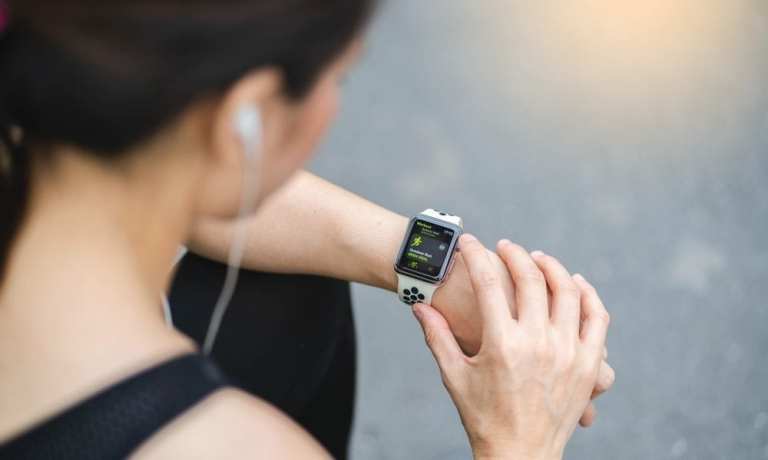Has Apple Won The Wearables Wars?

It’s the customer relationship — that seems to be the main storyline in the smartwatch wars, a competition that has recently seen Fitbit lose significant ground thanks to Apple and its own products and ecosystem.
The second quarter provided renewed clarity on the state of wearables — those web-enabled smartwatches and fitness tracking devices that are proving increasingly popular with consumers, and for various tasks that include not only health monitoring but commerce and payments.
The biggest bit of recent news from that area of retail?
In reporting its second quarter 2019 earning, Fitbit cut its revenue forecast thanks in large part to weaker-than-expected sales of Versa Lite, meant to be a relatively affordable smartwatch (about $160), at least when compared to the Apple offering. Fitbit’s smartwatch revenue decreased 27 percent year over year in Q2; smartwatches make up 36 percent of the company’s total sales.
The general differences between the Apple Watch and Fitbit’s Versa Lite (and other products) are pretty stark. Apple Watch can track health, play music, order an Uber, pay at a store that takes Apple Pay. Not only that, but the wearable offers seamless connection to the Apple iOS world. By contrast, Fitbit is a single purpose-built product — a fitness tracker, hardly the Swiss Watch-type item that Apple offers. Even the Versa Lite is relatively uncomplicated.
Revenue Hit
Thanks in part to those weak Versa Lite sales, Fitbit lowered its 2019 revenue forecast to between $1.43 billion and $1.48 billion, compared with its prior expectations of $1.52 billion to $1.58 billion. Total Fitbit revenue increased 4.8 percent year over year in Q2.
For its part, Apple posted growth rates of some 50 percent for its wearables division. Getting a particularly gleeful call-out during Apple CEO Tim Cook’s earnings call was the Apple Watch, which reportedly set a new June quarter revenue record. Cook also reported that over 75 percent of customers buying Apple Watches in the June quarter were buying their first Apple Watch.
That’s part of the ongoing bad news for Fitbit’s Versa Lite, which, according to observers, was meant to appeal to those first-time smartwatch buyers — people who might not want to pay the premium for the Apple device. “The Versa Lite was aimed at first-time smartwatch owners, but struggled against fitness trackers with smartwatch-like capabilities and with higher-end smartwatches capable of much more, like GPS, NFC and other [features],” IDC analyst Ramon Llamas recently told TomsGuide.com.
The report described another problem for Fitbit, one that probably hurt it in the second quarter and in its ongoing competition against Apple. “In years past, smartwatches have been pricey and laden with features that some people might not want, such as LTE connectivity or advanced health sensors,” the report stated. “But the Versa Lite wasn’t competing with those other, more expensive watches. It was competing with its own predecessor, the Versa.” And that predecessor is not that much more expensive than the Versa Lite.
Not only that, but consumers determined to buy into the Apple ecosystem have more affordable ways of doing that than buying the newest Apple Watch.
“It’s hard to not see the impact that the Apple Watch is having on Fitbit,” reads a recent analysis from 9to5Mac.com. “While the Fitbit Versa Lite comes in at $160, you can regularly buy previous generation Apple Watch models for not much more — and with more powerful features.”
And even as some pundits have declared the end of the iPhone era at Apple — a reflection of recent sales stumbles with that signature product, a keystone of mobile commerce — Apple is still rolling pretty strong not only with wearables, but also with its services.
Customer Relationships
Indeed, in the second quarter of 2019, the company’s Services unit — home to Apple Pay, Subscriptions, Apple Care and the App Store — saw 13 percent growth, slightly under analyst predictions. Cook did note that barring the settlement of a lawsuit and FX issues, that growth would have come in ahead of analyst estimates at 18 percent. No matter what, the growth of wearables and services indicated the advantage Apple has when it comes to its smartwatches — the company offers a deep ecosystem that can attract and retain consumers interested in wearables.
Fitbit, according to executives on the Q2 earnings call, does plan to increase its service offerings, including workout videos and other features. Not only that, but the company wants to build stronger ties with customers — underscoring the relatively deep relationships that Apple has with its customers. On that earnings call, Fitbit CEO James Park said such service could result in “longer lasting relationship with users while changing perception of products and services from a nice to have to need to have.”
Fitbit was still going strong with its fitness trackers in Q2, with sales of those up some 51 percent year over year. But Apple is bigger with wearables overall. According to Strategy Analytics, Apple wearables accounted for 51 percent of the global smartwatch market as of Jan. 1. Samsung was in second place, overtaking Fitbit and Garmin. Fitbit accounted for 13 percent of the global smartwatch market.
“Global smartwatch shipments hit an all-time high of 45.0 million units in full-year 2018. Smartwatch growth is soaring, as consumers seek to accessorize their smartphones and bring digital connectivity to their wrists,” said Steven Waltzer, industry analyst at Strategy Analytics.
Smartwatches and wearables are among the hottest areas of digital commerce and payments. Now, in this race between Fitbit and Apple, the importance of services and ecosystems are becoming much more clear.